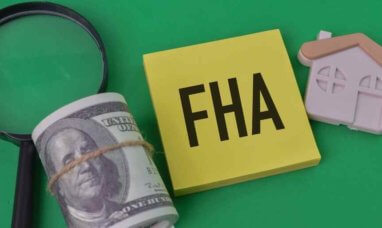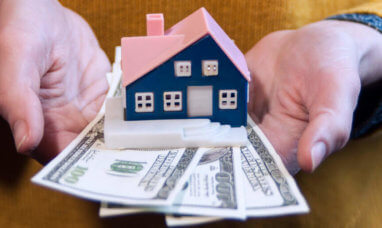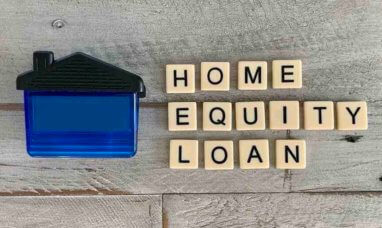Your furnace goes out, you discover a leak in the roof, or a pipe breaks in your basement.
As a homeowner, you have to be prepared for any number of things that could go wrong in your home. You’re not a renter anymore, so you can’t just call the landlord and have them take care of it. You’ve got to pay for it yourself. Here are 7 ways to cover the cost of emergency home repairs.
How to Fund Emergency Home Repairs
Unfortunately, some emergency home repairs can be quite expensive. Check out these seven helpful methods you can use to cover the costs.
1. Homeowners Insurance Claim
Part of your mortgage payment goes to paying for your homeowner’s insurance premium. Now is your chance to make use of that insurance.
If the emergency repair is required because of a covered incident, you can make a claim on your insurance. For example, if a burst pipe flooded the kitchen and ruined the floor, your homeowner’s insurance may cover some of all of the replacement costs.
Note: make sure to calculate your homeowners’ insurance cost to rebuild when picking out your coverage. If your coverage isn’t high enough, the company may not cover your claim if your home is destroyed.
2. Disaster Relief Programs
What if the whole valley where you live was flooded? Or perhaps a hurricane or tornado came through your area.
For major disasters, there is money available from relief organizations to help make your home livable again. Keep in mind that this money is to be used to make your home safe to reside in, not necessarily a full renovation.
If you think your situation qualifies, check with the Red Cross, FEMA (Federal Emergency Management Agency), or your local disaster relief agency for more information. Apply sooner rather than later because they typically hand out grants until the money runs out. If you’re too late, you might not get anything.
3. Home Repair Assistance from the Government
What if you’re buying a home that could use some repairs? You’re already scraping money together for the down payment, and may not have much leftover. This is where an FHA home repair loan of 203k comes in handy.
This government-backed loan allows buyers to purchase a home, plus roll extra funds into the loan to cover repairs or upgrades.
If you already have the home, a Title 1 Property Improvement Loan from the HUD could be a great choice. You can use funds from this loan to make your house more livable, but you’re not allowed to use the funds for luxury items like pools.
4. Community Development Programs
State and local governments and other agencies in your area may also offer emergency repair grants or loans. Often you will have to meet certain criteria to qualify, such as earning less than a certain percentage of the area’s median income. Other programs are offered to disabled, senior, or veteran homeowners.
Available options vary widely, so don’t be afraid to check them out. You never know what you can get if you don’t ask.
5. Home Equity Line of Credit, or HELOC
Once you’ve exhausted these avenues of getting money for repairs, you might have to put it on credit. The good news is that, as a homeowner, you can get a relatively cheap rate.
You can apply for a home equity line of credit, or HELOC, and borrow against the equity in your home. Because your lender can use your house as collateral, the interest rates are typically lower.
A HELOC works like a revolving line of credit, similar to a credit card. You qualify for a certain amount and can freely borrow up to that amount. As you pay the money back, you can take out more.
How do you qualify for a HELOC? It isn’t too difficult. The main thing is that you’re borrowing against the equity in your home, so you need to have enough equity available.
Can a lender foreclose on a home equity loan or line of credit? The answer is yes, so make sure to keep up on your payments.
6. Credit Card
If you don’t have enough equity to get a HELOC, you might consider putting it on your credit card.
Be careful with this method. Your credit limit may not be high enough to cover the entire cost of the repairs. Plus, credit card interest rates are notoriously high. If you are not able to pay it back quickly, you could still be paying it off when the next problem pops up.
One way to avoid the high interest is to take out a new credit card with a 0% interest introductory offer. However, you’ll have to have good credit and be approved for a high enough lending limit.
7. Cash-Out Refinance
Another option if you have equity in your home is to do a cash out refinance. This is a type of refinancing that involves taking a new loan at a higher amount than what you currently owe. The lender gives you the difference in cash to use as you please. Just be aware of possible refinance scams.
This is a great method to borrow money cheaply, especially if you’ve already been wanting to refinance. The only trouble is that the cash-out refinance timeline is rather long. It can take between 45-60 days to get the money, which might be too long when you need money for emergency repairs.
Paying for Home Repairs
Homeownership is a big financial responsibility. That is why some people prefer to rent. It’s so much easier to let someone else deal with problems that arise in the home.
However, homeownership comes with many benefits of its own, including ownership of your own property. This comes with the added responsibilities of taking care of your house, of course, making staying on top of repairs especially important.
When it comes to repairs, the cost doesn’t always have to be sky-high. It’s important to explore various avenues for how to pay off repairs or renovations, from loans to community development programs. As we’ve just covered above, there are many creative ways to achieve your home-ownership goals, without the added financial strain.
Featured Image: DepositPhotos








